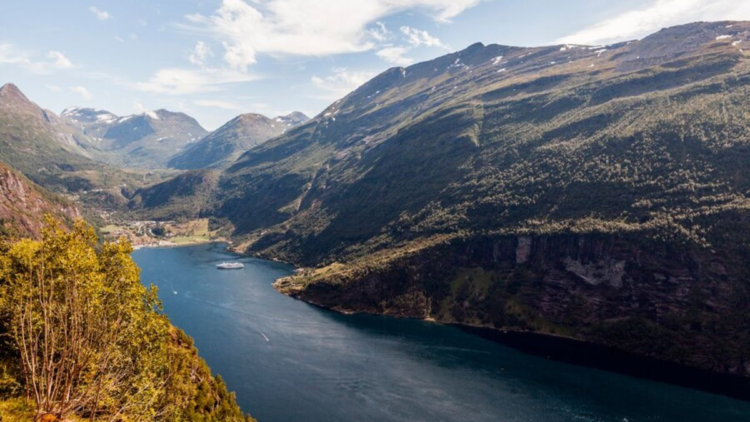Mountain Valleys Enchanting World

Mountain valleys are captivating features of the natural world, formed through the interplay of geological forces and natural processes. These serene landscapes offer a unique combination of beauty and ecological significance. In this article, we’ll explore the formation, types, and ecological importance of mountain valleys, along with their role in human culture and conservation efforts.
Formation of Mountain Valleys
Geological Processes
Mountain valleys are typically formed through a combination of tectonic activity, erosion, and glaciation. Tectonic forces, such as the collision of tectonic plates, uplift mountain ranges and create initial valley structures. Over time, these structures are shaped by erosion, where wind, water, and ice carve out the valleys.
Erosion and Glaciation
In many mountainous regions, glaciers play a significant role in valley formation. As glaciers advance and retreat, they erode the landscape, creating U-shaped valleys characterized by their broad, flat floors and steep sides. In contrast, rivers and streams contribute to V-shaped valleys, which are narrower and more steep-sided.
Types of Mountain Valleys
U-Shaped Valleys
U-shaped valleys are formed primarily by glacial activity. The ice within glaciers erodes the valley floor and sides, resulting in a characteristic U-shape. These valleys often have wide, flat bottoms and steep, rugged sides. Classic examples include the Yosemite Valley in California and the Rhine Valley in Switzerland.
V-Shaped Valleys
V-shaped valleys are typically shaped by river erosion. As rivers cut through rock and soil, they create narrow, steep-sided valleys. These valleys are often found in regions with less glacial activity. The Grand Canyon in Arizona is a prime example of a V-shaped valley formed by the Colorado River.
Hanging Valleys
Hanging valleys occur where a smaller valley intersects with a larger, deeper valley. This feature is common in glaciated areas where the smaller valley was carved by a glacier that was less powerful than the glacier that carved the larger valley. Hanging valleys often result in waterfalls where the stream from the smaller valley cascades down into the larger valley below.
Ecological Importance
Biodiversity Hotspots
Mountain valleys are often rich in biodiversity. The varying altitudes and microclimates within a valley create diverse habitats that support a wide range of plant and animal species. For instance, the valleys of the Himalayas are home to unique flora and fauna adapted to high-altitude environments.
Water Resources
Valleys serve as crucial sources of freshwater. Glacial meltwater and river systems originating from mountain valleys provide water for drinking, agriculture, and industry. In many regions, valleys act as natural reservoirs, storing and regulating water flow through various ecosystems.
Soil Fertility
The fertile soils found in many mountain valleys are a result of sediment deposition from glacial and river activity. These rich soils are ideal for agriculture, supporting diverse crops and farming practices that sustain local communities.
Cultural and Recreational Significance
Cultural Heritage
Mountain valleys often hold cultural and historical significance for indigenous and local communities. They may be sites of traditional practices, spiritual significance, or historical events. For example, many Native American tribes have deep cultural connections to the valleys in the Rocky Mountains.
Recreation and Tourism
Mountain valleys are popular destinations for outdoor recreation. Activities such as hiking, climbing, and skiing draw visitors seeking natural beauty and adventure. The scenic landscapes and tranquil environments of valleys make them ideal settings for eco-tourism and nature-based tourism.
Conservation Efforts
Environmental Protection
The ecological importance of mountain valleys necessitates conservation efforts to preserve their natural beauty and biodiversity. Efforts include protecting natural habitats from development, managing water resources sustainably, and addressing the impacts of climate change.
Climate Change Adaptation
Climate change poses significant threats to mountain valleys, including shifts in species distributions and changes in water availability. Conservation strategies focus on monitoring these impacts and implementing adaptive measures to protect vulnerable ecosystems and communities.
Conclusion
Mountain valleys are extraordinary natural features that offer a window into the dynamic processes shaping our planet. Their formation, diverse types, and ecological importance highlight the intricate relationship between geological forces and life. As we continue to explore and appreciate these landscapes, it is crucial to support conservation efforts to ensure their preservation for future generations.
FAQs on Mountain Valleys
1. What are the main types of mountain valleys, and how are they formed?
Mountain valleys come in several types, each formed through different geological processes. The main types include:
- U-Shaped Valleys: Created by glacial activity, these valleys have broad, flat floors and steep sides. Glaciers carve out the valley through their immense weight and movement.
- V-Shaped Valleys: Shaped primarily by river erosion, these valleys have narrow, steep sides. Rivers cut into the rock and soil over time, creating a distinct V-shape.
- Hanging Valleys: Formed where a smaller valley intersects a larger, deeper one, often resulting in waterfalls as the stream from the smaller valley cascades into the larger one below.
2. Why are mountain valleys ecologically significant?
Mountain valleys are ecologically significant for several reasons:
- Biodiversity: The diverse habitats created by varying altitudes and microclimates in valleys support a wide range of plant and animal species, making them rich biodiversity hotspots.
- Water Resources: They are vital sources of freshwater, providing water for drinking, agriculture, and industry through rivers and glacial meltwater.
- Soil Fertility: The fertile soils in many mountain valleys are ideal for agriculture, supporting diverse crops and farming practices that benefit local communities.

